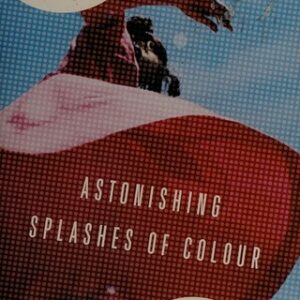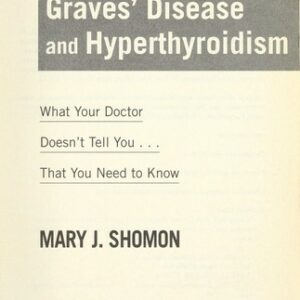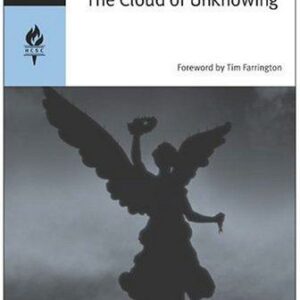A People’s Tragedy
$35.00
| Title | Range | Discount |
|---|---|---|
| Trade Discount | 5 + | 25% |
- Description
- Additional information
Description
On the brink of the 100th anniversary of the Russian Revolution, read the most vivid, moving, and comprehensive history of the events that changed the world
It is history on an epic yet human scale. Vast in scope, exhaustive in original research, written with passion, narrative skill, and human sympathy, A People’s Tragedy is a profound account of the Russian Revolution for a new generation. Many consider the Russian Revolution to be the most significant event of the twentieth century. Distinguished scholar Orlando Figes presents a panorama of Russian society on the eve of that revolution, and then narrates the story of how these social forces were violently erased. Within the broad stokes of war and revolution are miniature histories of individuals, in which Figes follows the main players’ fortunes as they saw their hopes die and their world crash into ruins. Unlike previous accounts that trace the origins of the revolution to overreaching political forces and ideals, Figes argues that the failure of democracy in 1917 was deeply rooted in Russian culture and social history and that what had started as a people’s revolution contained the seeds of its degeneration into violence and dictatorship. A People’s Tragedy is a masterful and original synthesis by a mature scholar, presented in a compelling and accessibly human narrative.Preface
Glossary
Notes on Dates
Maps
PART ONE RUSSIA UNDER THE OLD REGIME
1 The Dynasty
i The Tsar and His People
ii The Miniaturist
iii The Heir
2 Unstable Pillars
i Bureaucrats and Dressing-Gowns
ii The Thin Veneer of Civilization
iii Remnants of a Feudal Army
iv Not-So-Holy Russia
v Prison of Peoples
3 Icons and Cockroaches
i A World Apart
ii The Quest to Banish the Past
4 Red Ink
i Inside the Fortress
ii Marx Comes to Russia
PART TWO THE CRISIS OF AUTHORITY (1891–1917)
5 First Blood
i Patriots and Liberators
ii ‘There is no Tsar’
iii A Parting of Ways
6 Last Hopes
i Parliaments and Peasants
ii The Statesman
iii The Wager on the Strong
iv For God, Tsar and Fatherland
7 A War on Three Fronts
i Metal Against Men
ii The Mad Chauffeur
iii From the Trenches to the Barricades
PART THREE RUSSIA IN REVOLUTION (FEBRUARY 1917–MARCH 1918)
8 Glorious February
i The Power of the Streets
ii Reluctant Revolutionaries
iii Nicholas the Last
9 The Freest Country in the World
i A Distant Liberal State
ii Expectations
iii Lenin’s Rage
iv Gorky’s Despair
10 The Agony of the Provisional Government
i The Illusion of a Nation
ii A Darker Shade of Red
iii The Man on a White Horse
iv Hamlets of Democratic Socialism
11 Lenin’s Revolution
i The Art of Insurrection
ii The Smolny Autocrats
iii Looting the Looters
iv Socialism in One Country
PART FOUR THE CIVIL WAR AND THE MAKING OF THE SOVIET SYSTEM (1918–24)
12 Last Dreams of the Old World
i St. Petersburg on the Steppe
ii The Ghost of the Constituent Assembly
13 The Revolution Goes to War
i Arming the Revolution
ii ‘Kulaks’, Bagmen and Cigarette Lighters
iii The Colour of Blood
14 The New Regime Triumphant
i Three Decisive Battles
ii Comrades and Commissars
iii A Socialist Fatherland
15 Defeat in Victory
i Short-Cuts to Communism
ii Engineers of the Human Soul
iii Bolshevism in Retreat
16 Deaths and Departures
i Orphans of the Revolution
ii The Unconquered Country
iii Lenin’s Last Struggle
Conclusion
Notes
Bibliography
Index
ILLUSTRATIONS
Images of Autocracy
1 St. Petersburg illuminated for the Romanov tercentenary in 1913
2 The procession of the imperial family during the tercentenary
3 Nicholas II rides in public view during the tercentenary
4 Nevsky Prospekt decorated for the tercentenary
5 Guards officers greet the imperial family during the tercentenary
6 Townspeople and peasants in Kostroma during the tercentenary
7 The court ball of 1903
8 The Temple of Christ’s Resurrection
9 Trubetskoi’s equestrian statue of Alexander III
10 Statue of Alexander III outside the Cathedral of Christ the Saviour
11 The imperial family
12 Rasputin with his admirers
13 The Tsarevich Alexis with Derevenko
Everyday Life Under the Tsars
14 The city mayors of Russia
15 A group of volost elders
16 A newspaper kiosk in St. Petersburg
17 A grocery store in St. Petersburg
18 Dinner at a ball given by Countess Shuvalov
19 A soup kitchen for the unemployed in St. Petersburg
20 Peasants of a northern Russian village
21 Peasant women threshing wheat
22 Peasant women hauling a barge
23 Twin brothers, former serfs, from Chernigov province
24 A typical Russian peasant household
25 A meeting of village elders
26 A religious procession in Smolensk province
27 The living space of four Moscow factory workers
28 Inside a Moscow engineering works
Dramatis Personae
29 General Brusilov
30 Maxim Gorky
31 Prince G.E. Lvov
32 Sergei Semenov
33 Dmitry Os’kin
34 Alexander Kerensky
35 Lenin
36 Trotsky
37 Alexandra Kollontai
Between Revolutions
38 Soldiers fire at the demonstrating workers on ‘Bloody Sunday’, 1905
39 Demonstrators confront mounted Cossacks during 1905
40 The opening of the State Duma in April 1906
41 The Tauride Palace
42 Petr Stolypin
43 Wartime volunteers pack parcels for the Front
44 A smart dinner party sees in the New Year of 1917
45 Troops pump out a trench on the Northern Front
46 Cossacks patrol the streets of Petrograd in February 1917
47 The arrest of a policeman during the February Days
48 Moscow workers playing with the stone head of Alexander II
49 A crowd burns tsarist emblems during the February Days
50 The crowd outside the Tauride Palace during the February Days
51 Soldiers receive news of the Tsar’s abdication
Images of 1917
52 The First Provisional Government in the Marinsky Palace
53 The burial of victims of the February Revolution
54 A meeting of the Soviet of Soldiers’ Deputies
55 Waiters and waitresses of Petrograd on strike
56 The All-Russian Congress of Peasant Deputies
57 Fedor Linde leads an anti-war demonstration by the Finland Regiment during the April Crisis
58 Kerensky makes a speech to soldiers at the Front
59 Metropolitan Nikon blesses the Women’s Battalion of Death
60 General Kornilov’s triumphant arrival in Moscow during the State Conference
61 Members of the Women’s Battalion of Death in the Winter Palace on 25 October
62 Some of Kerensky’s last defenders in the Winter Palace on 25 October
63 The Smolny Institute
64 The Red Guard of the Vulkan Factory
The Civil War
65 General Alexeev
66 General Denikin
67 Admiral Kolchak
68 Baron Wrangel
69 Members of the Czech Legion in Vladivostok
70 A group of White officers during a military parade in Omsk
71 A strategic meeting of Red partisans
72 An armoured train
73 The Latvian Division passing through a village
74 Two Red Army soldiers take a break
75 Red Army soldiers reading propaganda leaflets
76 A Red Army mobile library in the village
77 Nestor Makhno
78 The execution of a peasant by the Whites
79 Jewish victims of a pogrom
80 Red Army soldiers torture a Polish officer
Everyday Life Under the Bolsheviks
81 Muscovites dismantle a house for firewood
82 A priest helps transport timber
83 Women of the ‘former classes’ sell their last possessions
84 A soldier buys a pair of shoes from a group of burzhoois
85 Haggling over a fur scarf at the Smolensk market in Moscow
86 Traders at the Smolensk market
87 Two ex-tsarist officers are made to clear the streets
88 Cheka soldiers close down traders’ stalls in Moscow
89 Requisitioning the peasants’ grain
90 ‘Bagmen’; on the railways
91 The 1 May subbotnik on Red Square in Moscow, 1920
92 An open-air cafeteria at the Kiev Station in Moscow
93 Delegates of the Ninth All-Russian Party Congress
94 The Agitation and Propaganda Department of the Commissariat for Supply and Distribution in the Northern Region
95 The Smolny Institute on the anniversary of the October coup
The Revolutionary Inheritance
96 Red Army troops assault the mutinous Kronstadt Naval Base
97 Peasant rebels attack a train of requisitioned grain
98 Bolshevik commissars inspect the harvest failure in the Volga region
99 Unburied corpses from the famine crisis
100 Cannibals with their victims
101 Street orphans in Saratov hunt for food in a rubbish tip
102 The Secretary of the Tula Komsomol
103 A juvenile unit of the Red Army in Turkestan
104 Red Army soldiers confiscate valuables from the Semenov Monastery
105 A propaganda meeting in Bukhara
106 Two Bolshevik commissars in the Far East
107 The dying Lenin in 1923
“Few historians have the courage to attack great subjects; fewer have the grasp to succeed. This is a book that lets the reader look into the face of one of the major social upheavels of history. . . . A People’s Tragedy will do more to help us undersand the Russian Revolution than any other book I know.”
—Eric Hobsbawm, The London Review of Books
“I doubt there is anyone in the world who knows the revolution as well as Figes does.”
—Norman Stone, The Sunday Times (London)
“An engagingly written and well-researched book. . . . Will stand for some time as a standard of historical scholarship.”
—Steven Merritt Miner, The New York Times Book Review
“Huge in scope, brilliant in vignette, dark and implacable in theme, it is a modern masterpiece.”
—Andrew Marr, The Independent
Orlando Figes is the prizewinning author of A People’s Tragedy and Natasha’s Dance. He is a regular contributor to The New York Times, The Washington Post, and The New York Review of Books.CA
Additional information
| Weight | 33.2 oz |
|---|---|
| Dimensions | 1.6400 × 6.1400 × 9.1400 in |
| Imprint | |
| Format | |
| ISBN-13 | |
| Author | |
| Audience | |
| BISAC | |
| Subjects | stalingrad, political science books, international politics, history gifts, political philosophy, world politics, gifts for history buffs, history teacher gifts, russia book, political books, history of russia, russian books, political ideologies, russian history books, history of russia book, the russian revolution, russian civil war, capital, politics, Communism, Russia, political science, socialism, history books, world history, russian history, history, government, geopolitics, Cold War, russian, POL060000, POL005000, Russian Revolution |











